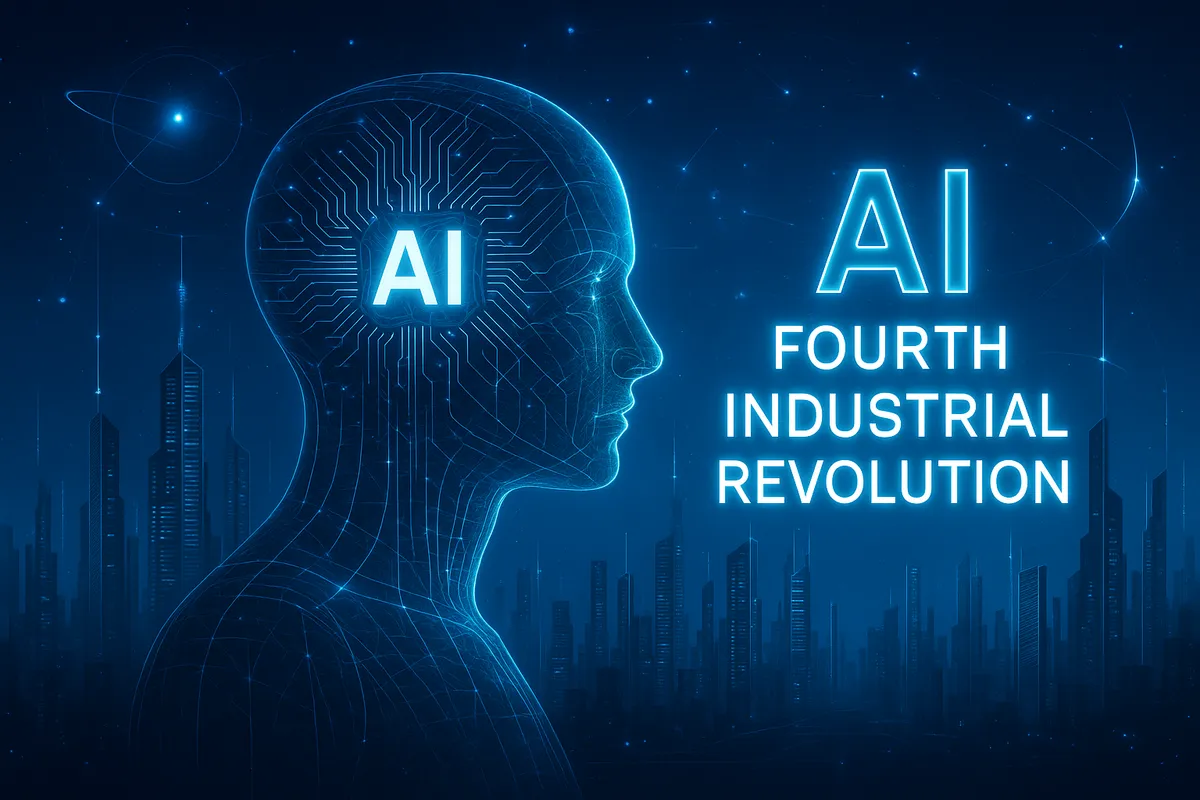The AI-driven Fourth Industrial Revolution

The Fourth Industrial Revolution has arrived—and AI is at its core. Let’s explore what’s changing and why. 👇
More than 250 years ago, Adam Smith identified land, labor, and capital as foundational elements of production, alongside his more widely known trio: free markets, private property rights, and competition. While these principles still hold, their definitions have evolved—and AI is now transforming them, particularly the concept of labor, in ways previously reserved for manual work.
Here’s a breakdown:
➡️ Land now refers to more than just geography. It includes all the essential resources for production—rare earth elements for chips, the energy grid, and the physical spaces that house data centers. Major cloud providers aren’t just acquiring land; they’re investing in nuclear power facilities to fuel the growing AI demand.
➡️ Capital extends well beyond financial assets. It includes infrastructure, machinery, advanced technology, and highly trained personnel. Even if we focus solely on monetary investment, the scale is staggering. Since the debut of tools like ChatGPT, AI-specific compute spending has soared to historic levels. For context, the Manhattan Project cost about $2 billion (roughly $27 billion today), and the Apollo Program came in at $27 billion (around $260 billion today). In comparison, global AI investment in 2021 alone reached $276.1 billion. While AI funding has since cooled, that’s largely because the focus has shifted from R&D to building the infrastructure needed to meet rising demand.
➡️ Labor is where AI is driving the most profound change. Previously constrained by human limits, labor is now being reconceptualized. A single AI system can perform—or assist with—the equivalent work of hundreds of skilled professionals, depending on the task.
Economists typically measure output by analyzing the interplay between resources, capital, and labor. Historically, progress has come from gradually improving one of these levers. AI, however, adds a new productivity multiplier that, in certain sectors, shifts growth patterns from slow, logarithmic curves to more rapid, linear ones.
Still, uncertainty remains. Even Microsoft has acknowledged it doesn't yet know when its AI investments will yield clear returns—a fact that hasn't gone unnoticed on Wall Street. This raises critical questions: How do we define success in this new paradigm? How should industries adapt to evolving models of work and value creation?
What’s undeniable is that AI isn’t just another tool—it’s a transformative force reshaping the very foundations of the global economy and society.